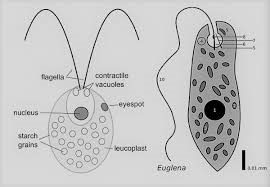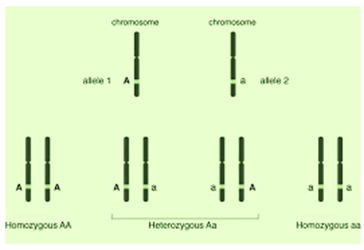What organelles are activated to pump water out of the cell?
Free ribosomes.
Contractile vacuoles.
Mitochondria.
Microtubules.
Correct Answer : B
Contractile vacuoles are organelles found in some protists and single-celled organisms, primarily freshwater unicellular organisms. These vacuoles are responsible for regulating the water content of the cell by actively pumping excess water out of the cell. Contractile vacuoles collect excess water from the cytoplasm through a process of osmosis, where water diffuses into the cell due to differences in solute concentration between the cell and its environment. Once filled, contractile vacuoles contract rhythmically, expelling the excess water from the cell to maintain osmotic balance and prevent cell swelling or bursting. This process is particularly important for organisms living in hypotonic environments where water uptake is significant.

HESI A2 Exam Quiz Bank
TEAS 7 Exam Quiz Bank
Find More HESI Questions
HESI A2 Questions: We got the latest updated HESI A2 Questions
100% Money Refund: 100% money back guarantee if you take our full
assessment pass with 80% and fail the actual exam.
Live Tutoring: Fully customized live tutoring lessons.
Guaranteed A Grade: All students who use our services pass with 90%
guarantee.
Related Questions
Correct Answer is A
Explanation
Alternate forms of a gene for the same trait are called alleles. Alleles are different versions or variations of a gene that occupy the same locus (position) on homologous chromosomes. For example, the gene for flower color in pea plants may have alleles for purple flowers (P) and alleles for white flowers (p). Individuals inherit one allele from each parent, and the combination of alleles determines the genotype, or genetic makeup, of an organism. Alleles may be dominant or recessive, and their expression can influence the phenotype, or observable traits, of an organism.

Correct Answer is A
Explanation
The magnification of a standard ocular lens on a light microscope is typically 10X. The ocular lens, also known as the eyepiece, is the lens closest to the observer's eye. It magnifies the image produced by the objective lens, which is the lens closer to the specimen being observed. Together, the ocular lens and the objective lens determine the total magnification of the microscope. The standard ocular lens provides a magnification of 10X, meaning it magnifies the image by a factor of 10 compared to the naked eye.
Correct Answer is C
Explanation
The cellular membrane, also known as the plasma membrane or phospholipid bilayer, is primarily composed of lipids, specifically phospholipids. Phospholipids are molecules with hydrophilic (water-attracting) heads and hydrophobic (water-repelling) tails. These phospholipids arrange themselves into a bilayer structure, with the hydrophilic heads facing outward toward the aqueous environments inside and outside the cell, while the hydrophobic tails are sandwiched in between. Additionally, the cellular membrane contains proteins, carbohydrates, and cholesterol, which play various roles in maintaining membrane structure, cell signaling, and cell recognition.
Correct Answer is C
Explanation
In the life cycle of humans, only sperm and eggs, the gametes, have a haploid number of chromosomes. Haploid cells contain half the number of chromosomes found in diploid cells, which have two sets of chromosomes (one from each parent). During sexual reproduction, haploid gametes from each parent fuse to form a diploid zygote, which then develops into a new organism with a complete set of chromosomes. This process ensures genetic diversity and contributes to the variation observed within populations of sexually reproducing organisms.
This question was extracted from the actual HESI A2 Exam. Ace your TEAS exam with the actual HESI A2 Exam questions, Start your journey with us today
Visit Naxlex, the Most Trusted HESI Prep Platform With Guaranteed Pass of 90%.
Money back guarantee if you use our service and fail the actual exam. Option of personalised live tutor on your area of weakness.
